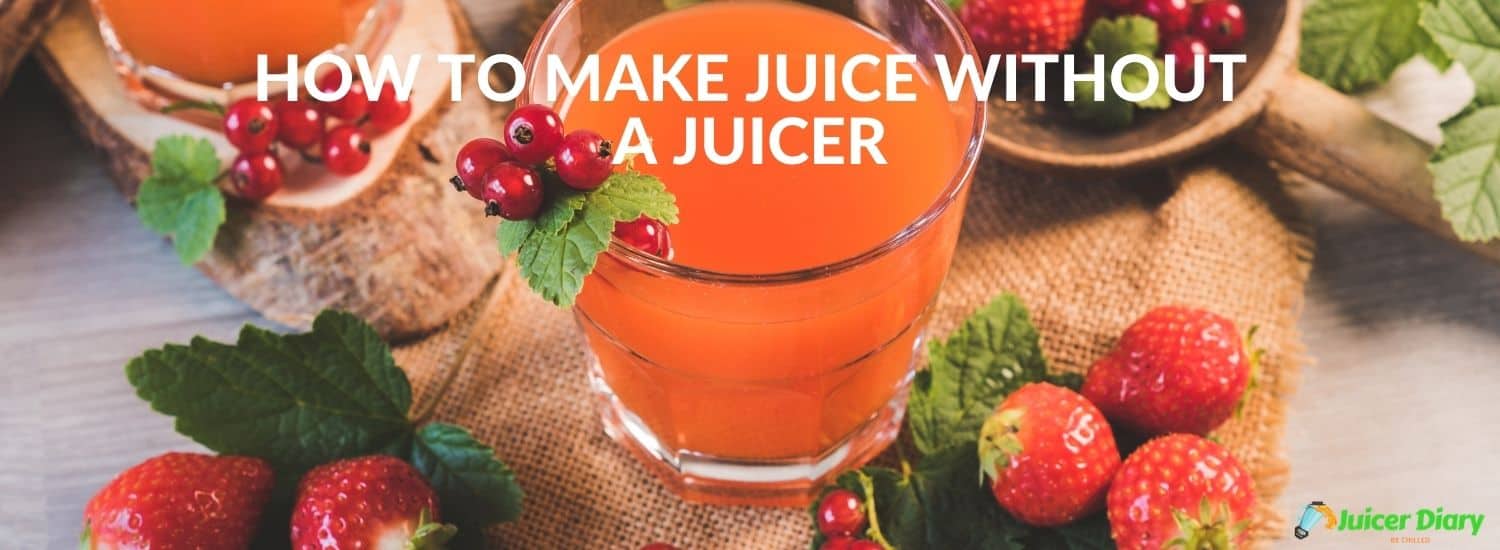If you cannot figure out how to make juice without a juicer, this article will ease your worries. Not to mention, juicing is an excellent way you can improve your fitness and find the dose of nutrition.
However, there is a popular belief that making delicious juice requires a dedicated juicer. When there are some facts and claims behind it, the juicer comes with a high price tag which most people cannot afford. The good news is, even a regular blender can get you the same result if you know the trick.
Below I will discuss this in detail, dividing them into seven comprehensive sections. So, without any delay, let's get into this.
Part 1: Choosing Fruits & Veggies
a) For complementary flavor:
At first, it is important that you are selecting fruit & veggies with flavor that goes well mixed together. This will make your juice more dense & flavorful. Apart from this, you can add kale & ginger into the blend. This simple trick can make your friend believe you are an expert.
Here are some ingredients to mix for best results:
- Strawberries, pineapples, and kiwis
- Carrots, beets, and apples
- Leafy greens with green apples, cucumbers, melon, and pears.
b) For balancing flavor:
While making the juice, try to strike a balance between the sweet and savoring flavor to make it more potable. If the juice is too sweet, it becomes hard to drink when savory juices are often off-putting.
- Putting some kale in your juice increase health benefits. However, harsh taste could be unpleasant to some people. In this case, adding a few pieces of apple will ease the taste.
- If you wish, you can make juice with root veggies like mixing carrots and beets. Add fruits like apple to bring sugary flavor to it. This technique works well for smoothies, which are a bit sour.
- Squeezing a bit of lemon in the mixture will balance out a smoothie that's already quite sweet.
- To revive a mild smoothie with a spicy feel, you can try putting in ginger to the mixture as well.
C) For the uniform mixture:
Almost any produce can be turned into juice; however, you must ensure that it is easily drinkable. By adding produces like citrus fruits, and tomatoes, you can incorporate more minerals into the juice and enjoy different flavors.
Alternatively, you can pour a small amount of water or add unfiltered apple juice in the blender. The method is often very effective when you're using a regular blender instead of a high-speed model.
Part 2: Peeling Off Skin
Seeds, cores, and peels are undoubtedly nutritious. At the same time, they are harder for the blender blade to handle. Therefore, only consider keeping these intact when your fruits or veggies are mostly organic.
But, to help the machine prolong its life, always remove big pits like those found in avocados, plums, and peaches. Peeling pineapples before juicing are also suggested.
For farm-based ingredients, you should always remove the skin and prevent harmful pesticides from entering your juice.
Part 3: Cleaning Thoroughly
Every fruit and vegetable should be thoroughly rinsed to get rid of all the dirt that may cling to the skin. Besides this, you may also want to gently scrub root veggies to remove hard to clean debris. You can do it perfectly using a vegetable brush.
Part 4: Chopping Off Produces
While you're chopping the produces, it's important that they are relatively larger in sizes (1 to 2 cm for fruits; 2.5 to 5.1 cm for vegetables) and fairly even. This will make blending a lot easier without leaving unnecessary strain on the blades.
Part 5: Adding the Chunks
The order in which you add the ingredients has a significant role, especially when you aren't using a high-speed blender.
In your blender, try to introduce the juiciest produces (cucumbers, tomatoes, citrus fruits, etc.) first and then pile up the harder chunks (beets and carrots). This will allow the blender blade to process juicy items faster while making it easier to blend the sturdier ingredients.
Part 6: Blending the Ingredients
Following the above, now you should close the lid and set the blender to its highest setting. You might interrupt and skip the process occasionally in order to give the ingredient a nice stir and make them dilute better. Continue to blend until the yield looks smooth. Nothing wrong if you see peels and seeds are floating around at this stage.
Part 7: Straining the Juice
When you're satisfied with the blend to finish, take a mesh strainer to separate the pulp and a bowl to collect the fresh juice. Pour down the mixture from the jar into the strainer and set them for 5-10 minutes. You can extract more juice by pressing the yield gently using a spatula. Increase the force in case you like to have a bit of pulp in the juice.
I would like to share a video from Nutrition Stripped where you can see the steps on how to make juice without a juicer. Let’s enjoy.
If you don't have enough time to carry out all these challenging tasks and at the same time don't want to spend an extra penny, you could visit our article on the best affordable juicer under $100 to find the best match for you.
One last suggestion I would give is to drink the juice on the same day you've made it for the most flavorful taste. In case you end up having leftover, keep them in a sealed container and store in your fridge. You must drink them within three days before the quality starts to decline.
So, that's it for today.
I hope you've liked the information shared above and clearly understand how to make juice without a juicer. Now, try different recipes and treat yourself with healthy juices at home.

